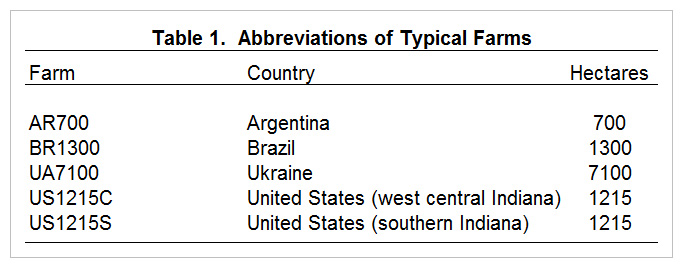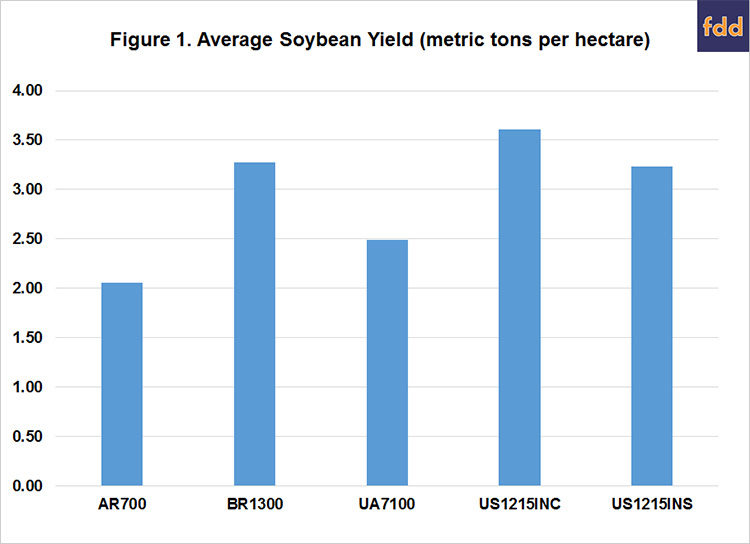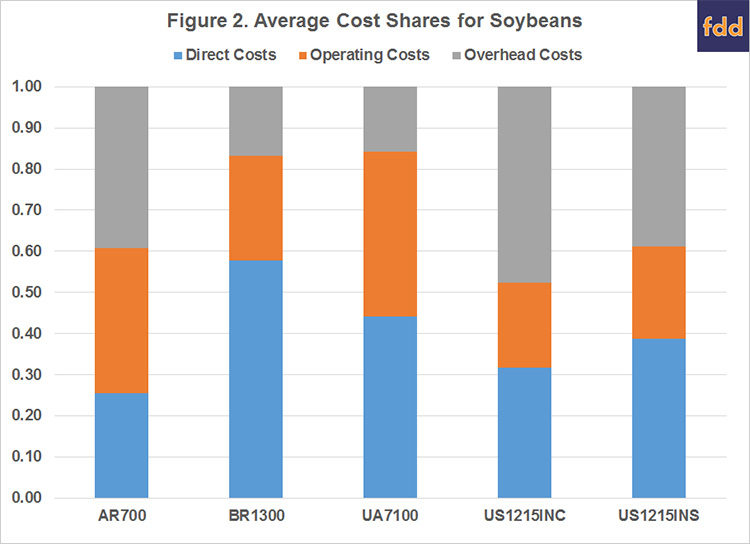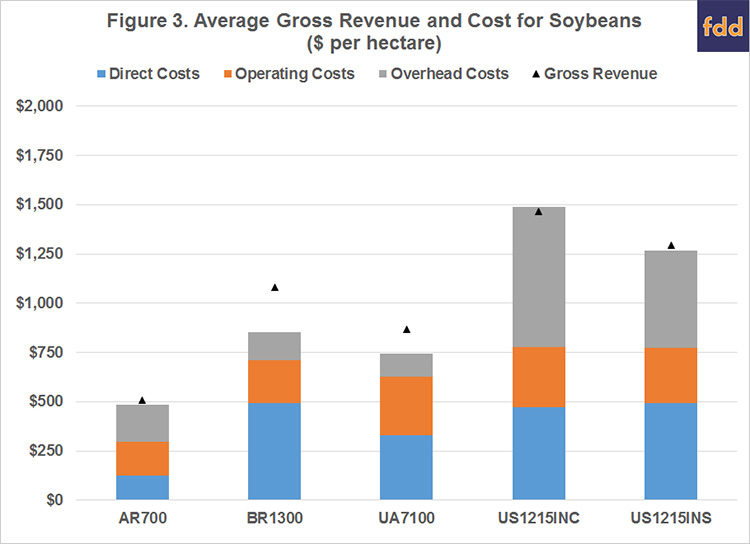September 12, 2016
International Benchmarks for Soybean Production (2016)
Examining the competitiveness of soybean production in different regions of the world is often difficult due to lack of comparable data and agreement regarding what needs to be measured. To be useful, international data needs to be expressed in common production units and converted to a common currency. Also, production and cost measures need to be consistently defined across production regions or farms.
This paper examines the competitiveness of soybean production for important international soybean regions using 2013 to 2015 data from the agri benchmarknetwork. An earlier paper used 2012 to 2014 data to examine competitiveness (farmdoc daily, December 4, 2015). The agri benchmark network collects data on beef, cash crops, dairy, pigs and poultry, horticulture, and organic products. There are 36 countries represented in the cash crop network. The agri benchmark concept of typical farms was developed to understand and compare current farm production systems around the world. Participant countries follow a standard procedure to create typical farms that are representative of national farm output shares, and categorized by production system or combination of enterprises and structural features.
The sample farms used in this paper was comprised of five typical farms with soybean enterprise data from Argentina, Brazil, Ukraine, and United States. All of these farms also produced corn. For information pertaining to corn production see Langemeier, 2016 (farmdoc daily, September 2, 2016). It is important to note that soybean enterprise data is collected from other countries. These four countries were selected to simplify the illustration of costs and discussion.
The farm and country abbreviations used in this paper are listed in table 1. Typical farms used in the agri benchmark network are defined using country initials and hectares on the farm. There are five U.S. farms with soybeans in the network. The two farms used to illustrate soybean production in this paper are the west central Indiana farm (US1215C) and the southern Indiana farm (US1215S).
Soybean Yields
Although yield is only a partial gauge of performance, it reflects the available production technology across farms. Average soybean yield for the farms in 2013 to 2015 was 2.93 metric tons per hectare (43.6 bushels per acre). Average farm yields ranged from approximately 2.06 metric tons per hectare for the typical farm in Argentina (30.6 bushels per acre) to 3.61 metric tons per hectare for the west central Indiana farm (53.7 bushels per acre). Figure 1 illustrates average soybean yield for each typical farm.
Input Cost Shares
Due to differences in technology adoption, input prices, fertility levels, efficiency of farm operators, trade policy restrictions, exchange rate effects, and labor and capital market constraints, input use varies across soybean farms. Figure 2 presents the average input cost shares for each farm. Cost shares were broken down into three major categories: direct costs, operating costs, and overhead costs. Direct costs included seed, fertilizer, crop protection, crop insurance, and interest on these cost items. Operating cost included labor, machinery depreciation and interest, fuel, and repairs. Overhead cost included land, building depreciation and interest, property taxes, general insurance, and miscellaneous cost.
The average input cost shares were 39.6 percent for direct cost, 28.8 percent for operating cost, and 31.7 percent for overhead cost. The two Indiana farms had below average cost shares for direct cost and operating cost, and an above average cost share for overhead cost. The relatively large cost share for overhead cost in the U.S. reflects, in part, our relatively high land cost.
Revenue and Cost
Figure 3 presents average gross revenue and cost for each typical farm. Gross revenue and cost are reported as U.S. dollars per hectare. Soybeans are a major enterprise on all of the typical farms presented in figure 3. It is obvious from figure 3 that gross revenue per hectare is substantially higher for the two U.S. farms. However, cost is also substantially higher for these two farms. The only typical farm that did not earn an economic profit producing soybeans during the 2013 to 2015 period was the west central Indiana farm. Average economic profits for the typical farms in Argentina, Brazil, and Ukraine were $21 ($8 per acre), $229 per hectare ($93 per acre), and $123 per hectare ($50 per acre), respectively. For the southern Indiana typical farm, average economic profit for the 2013 to 2015 period was $28 per hectare ($11 per acre).
Conclusions
This paper examined yield, gross revenue, and cost for farms with soybeans in the agri benchmark network from Argentina, Brazil, Ukraine, and United States. Yield, gross revenue, and cost were substantially higher for the U.S. farms. Farms in Brazil and Ukraine were extremely profitable during the 2013 to 2015 period. The typical farms in Argentina and United States were closer to breakeven during this period.
References
Langemeier, M. “International Benchmarks for Corn Production.” farmdoc daily (6):167, Department of Agricultural and Consumer Economics, University of Illinois at Urbana-Champaign, September 2, 2016.
Langemeier, M., and E. Lunik. “International Benchmarks for Soybean Production.” farmdoc daily (5):225, Department of Agricultural and Consumer Economics, University of Illinois at Urbana-Champaign, December 4, 2015.
TAGS:
TEAM LINKS:
RELATED RESOURCES
Margaret Lippsmeyer presented during agri benchmark’s 2024 annual conference in mid June, which was hosted by the Spanish Ministry of Agriculture in Valladolid, Spain. An increase in soybean acreage may come from either (a) shifting away from continuous corn rotations to corn-soy and (b) shifting corn-soy rotations toward corn-soy-soy. Based on agri benchmark data, Margaret showed that option (a) would require an increase in soybean prices of 6% and option (b) of 8% to make these rotations preferable over existing ones.
READ MOREUPCOMING EVENTS
We are taking a short break, but please plan to join us at one of our future programs that is a little farther in the future.







